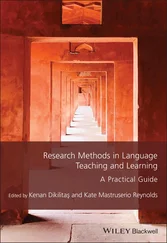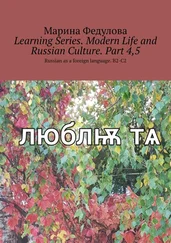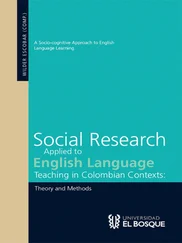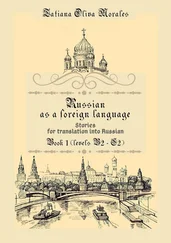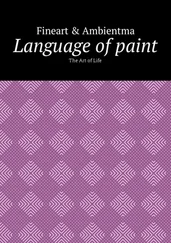Specific qualities required in the art of teaching are seen in the conveying of knowledge through meaningful interaction with pupils in the classroom.
This act involves the entire being of the teacher in the same way that other arts fully involve their practitioners:
The character of the art of teaching is to represent to learners through social interaction with them meanings about knowledge. The succession of experiences we provide for them and within the framework of those experiences the nuances of our questions, our judgements of their work, our tutorial advice, even the very gestures and postures of our bodies, are expressive of those meanings, sometimes explicitly, sometimes as elements in what has come to be called a ‘hidden curriculum’ (Jackson, 1968) Teaching represents knowledge to people rather as theatre represents life.102
In the end, Stenhouse is also very concerned to stress that his vision of artistic teaching is not fully realized in the teacher’s having finally learned to convey knowledge in an artistic manner. The inner attitude of the teacher as artist is for him the key to her being able to perpetually develop her artistry. This attitude is based on an acceptance of one’s limitations and the continual desire to overcome them:
Teachers must be educated to develop their art, not to master it, for the claim to mastery merely signals the abandoning of aspiration. Teaching is not to be regarded as a static accomplishment like riding a bicycle or keeping a ledger; it is, like all arts of high ambition, a strategy in the face of an impossible task.103
1.3.3 The Concept of Teaching as a Performing Art
In the 1970s and 80s there were a few educators in the United States who advanced the idea that teaching should be considered as a performing art .104 This connection between teaching and performance which was already present in the Kunsterziehungsbewegung as well as in Eisner’s more general considerations of teaching as an art, became a central focus in the thinking of Jacqueline Dillon, Robert Travers, Louis J. Rubin, W.M. Timpson, D.N. Tobin and Elyse Lamm Pineau. Pineau’s later article Teaching is Performance: Reconceptualizing a Problematic Metaphor (1994) offered a far-ranging perspective on the possibilities of connecting future educational research with performance research. More recently, the most prominent educator who has explored this idea is undoubtedly Seymour Sarason whose book Teaching as a Performing Art (1999) has probably become the most widely known in this regard. Since then, there has also been a further growth of interest in this idea, reflected in both published works as well as in a few university training programs based on the development of these connections.105
1.3.4 Teaching as a Performing Art – Dillon and Travers
Two years before Eisner published The Educational Imagination , J. Dillon and R. Travers in their book The Making of a Teacher: A Plan for Professional Self-Development (1975) advanced a concept of teacher training based on Stanislavski’s method of acting.106 In their evaluation of the limits and failings of traditional teacher training programs they came to the conclusion that in having trainees adopt the methods of experienced teachers as their models, the necessity of teachers finding their own, personal authentic style of teaching had been ignored. They write,
All too often students, and classroom teachers too, expect the college of education to provide sanctioned rituals for classroom management, and complain that the college is detached from the real teaching situation when it cannot do this. Such a criticism shows a failure to understand that the role of the teacher has to be created by the teacher himself and that it is an intensely personal and individual role. A School of Education can do no more than help provide some of the raw material out of which a role is crated.107
In adopting the methods through which Stanislavski helped actors to create and develop their roles, they hope to help teachers find their own personal manner of classroom teaching:
The work of Stanislavski is significant for teacher education because it is an attempt to develop a theory of role acquisition that results in complete and genuine authenticity of the role to be acquired. Most teachers of teachers would agree that the performance of the teacher in the classroom should involve a high degree of authenticity. (…) The procedure suggested here for the acquisition of a teaching role… involve the five following steps:
The study of the role itself.
The search for material which becomes the medium through which the role is acted out.
The search for characteristics and attributes within the student of education that can become incorporated into the role.
The preparation of the student of education for undertaking the role in the classroom.
The endless search for material to be incorporated into the role, to keep the role alive and to prevent it from becoming routinized.108
From this perspective, they suggest having prospective teachers act in a series of dramatized classroom scenarios which the authors wrote to reflect different classroom situations. The goal is to provide the potential teacher with models, “not of what the effective teacher does, but of the kind of person an effective teacher has to be.”109 The prospective teachers are expected to study the roles presented in each scenario as though they were parts in a play. The first step is to empathize with the teacher portrayed; to try and experience her feelings, attitudes and values:
When studying a role, each one must learn how to play the role through the medium of his own personality. One teacher may show supportive behaviour toward the pupil by a smile; another, by a friendly touch of the child’s head. In the study of each scenario the student of education must think about how his modes of expression would be called into play by the particular situation. He must imagine himself incorporating the role through the medium of his own habits of living.110
They are proposing that through this step of embodiment, the teacher’s classroom behaviour will become more authentic and thus more effective:
The scenarios provide a medium through which a student of education can begin to prepare to be a particular kind of person in the classroom. He must realize that he is creating a particular kind of person to enter the classroom situation. He must prepare himself for that situation just as carefully as he would prepare himself to engage in one of life’s delicate encounters. His ordinary, everyday, at-home self is very unlikely to be the kind of self that will be effective in classroom interactions.111
Dillon and Travers’ approach has the distinction of being probably the first documented attempt to advance a concept of teacher training based on connections between learning the art of acting and the art of teaching. Their arguments for the need for further research in developing further programs based on these underlying connections are well-founded. However, it is also obvious that their own program was very much shaped by the strong behaviouristic attitudes which were still widely prevalent in the field of educational psychology at that time. There are clearly a number of contradictions raised by their attempt to help teachers develop personal authenticity through having them study and then act out someone else’s ‘play-scenarios’ based on theoretical classroom situations. In fact, the reasoning behind their approach can be seen as standing in apparent contradiction to their actual methods. In this respect some of the difficulties inherent in finding appropriate ways to train teachers as artists are highlighted.
Читать дальше

